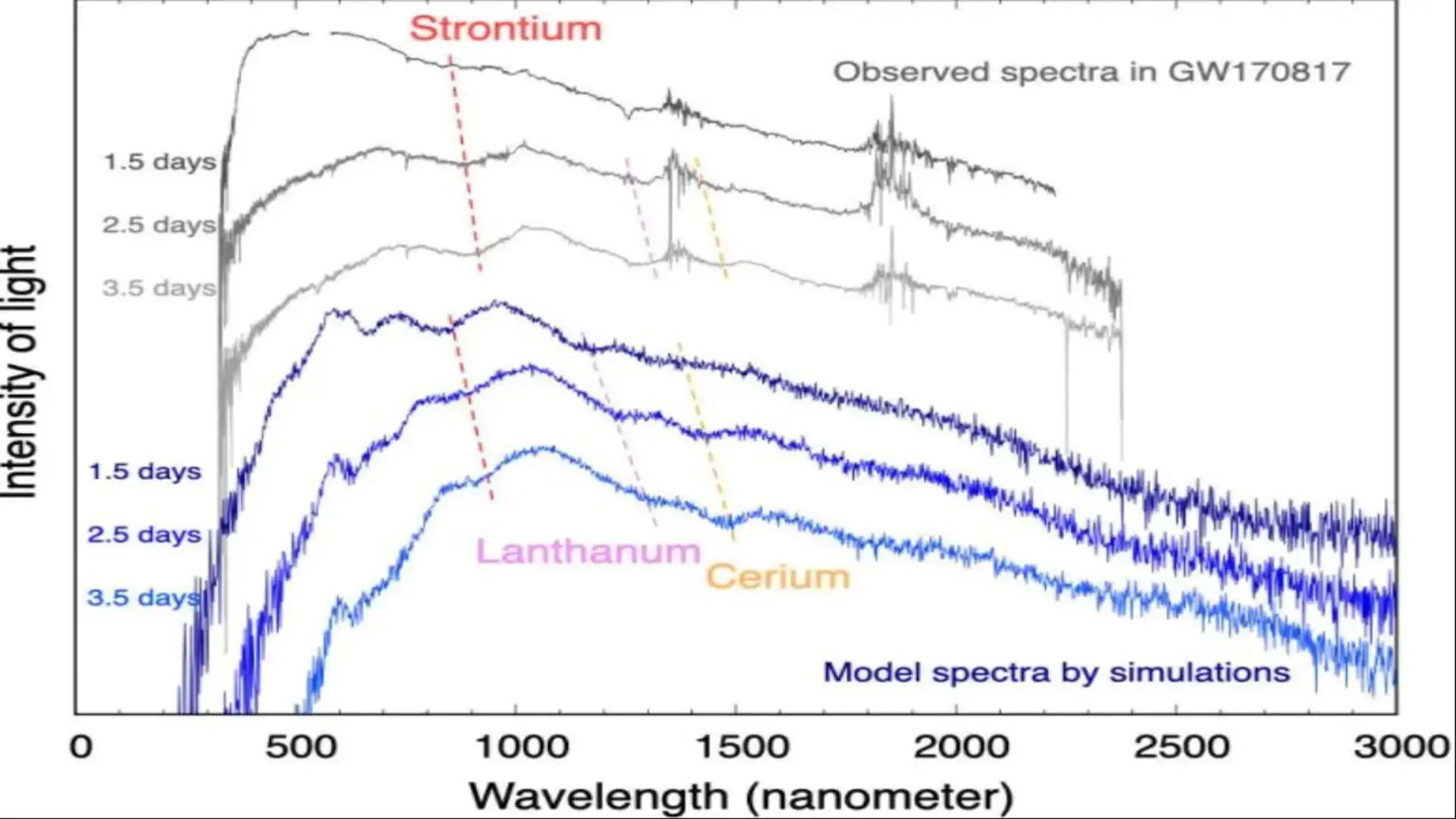For the first time, Japanese scientists have found evidence that rare earth elements are indeed made when two neutron stars merge. The Astrophysical Journal just published the specifics of the scientists' discoveries.
Many of the heavy atoms that make up our universe are created in the explosion that occurs when two neutron stars spiral inward and merge.
The first verified incidence of this process, GW 170817, occurred in 2017. Despite this, except for strontium, recognized in optical spectra, scientists have struggled to pinpoint the precise elements produced during neutron star mergers.
For reference, the gravitational wave (GW) signal known as GW 170817, which came from the shell elliptical galaxy NGC 4993, was detected by the LIGO and Virgo detectors on August 17, 2017.
A binary pair of neutron stars created the signal in their final moments of inspiral, which culminated in a merger. It is the first GW finding to be supported by non-gravitational methods.
A research team was led by Nanae Domoto, a graduate student at Tohoku University's Graduate School of Science and a research fellow at the Japan Society for the Promotion of Science (JSPS). They were trying to figure out what the spectra from neutron star mergers meant.

Nanae Domoto et al 2022.
The bright emissions from GW 170817's kilonovae are caused by the radioactive decay of newly formed nuclei thrown away during the merger. Researchers discovered that the rare elements lanthanum and cerium might be able to copy the near-infrared spectral features seen in 2017.
This finding was based on comparisons of detailed kilonovae spectra simulations produced by the National Astronomical Observatory of Japan's supercomputer "ATERUI II."
Before now, scientists thought that rare earth elements existed based on how bright a kilonova got over time, not on its spectral properties.
“This is the first direct identification of rare elements in the spectra of neutron star mergers, and it advances our understanding of the origin of elements in the Universe,” Dotomo explained.
“This study used a simple model of ejected material. Looking ahead, we want to factor in multi-dimensional structures to grasp a bigger picture of what happens when stars collide,” Dotomo added.
You can view the study for yourself in the journal The Astrophysical Journal.
Study abstract:
"The observations of GW170817/AT2017gfo have provided us with evidence that binary neutron star mergers are sites of r-process nucleosynthesis. However, the observed signatures in the spectra of GW170817/AT2017gfo have not been fully decoded, especially in the near-infrared (NIR) wavelengths. In this paper, we investigate the kilonova spectra over the entire wavelength range with the aim of elemental identification. We systematically calculate the strength of bound–bound transitions by constructing a hybrid line list that is accurate for important strong transitions and complete for weak transitions. We find that the elements on the left side of the periodic table, such as Ca, Sr, Y, Zr, Ba, La, and Ce, tend to produce prominent absorption lines in the spectra. This is because such elements have a small number of valence electrons and low-lying energy levels, resulting in strong transitions. By performing self-consistent radiative transfer simulations for the entire ejecta, we find that La iii and Ce iii appear in the NIR spectra, which can explain the absorption features at ? ? 12000–14000 A in the spectra of GW170817/AT2017gfo. The mass fractions of La and Ce are estimated to be >2 ? 10?6 and ?(1–100) ? 10?5, respectively. An actinide element Th can also be a source of absorption as the atomic structure is analogous to that of Ce. However, we show that Th iii features are less prominent in the spectra because of the denser energy levels of actinides compared to those of lanthanides."
 SHOW COMMENT (1)
SHOW COMMENT (1)


Satellites are important for both scientific and commercial purposes but the increased number of them blocks the view.

 Artemis I: Space experts tell us why NASA's mission will make history
Artemis I: Space experts tell us why NASA's mission will make history
 JWST head reveals why the advanced telescope’s sunshield was surprisingly challenging
JWST head reveals why the advanced telescope’s sunshield was surprisingly challengingBackyard Scientist’s rocket-knife hits the target at 400mph

World’s first screening test for pancreatic cancer sees worms sniff out tumors



